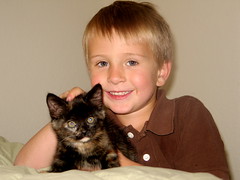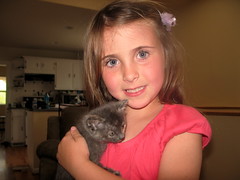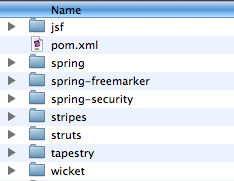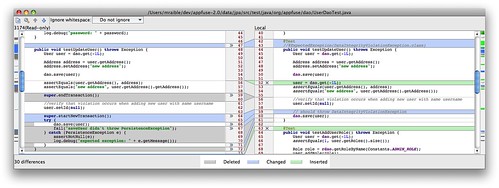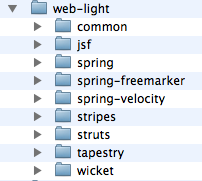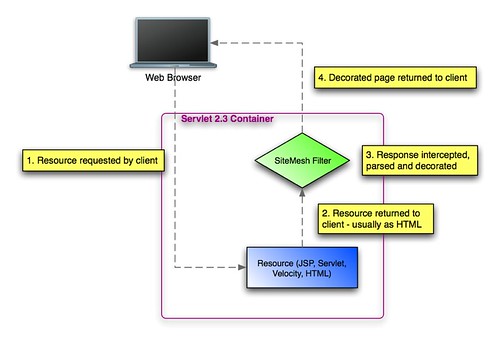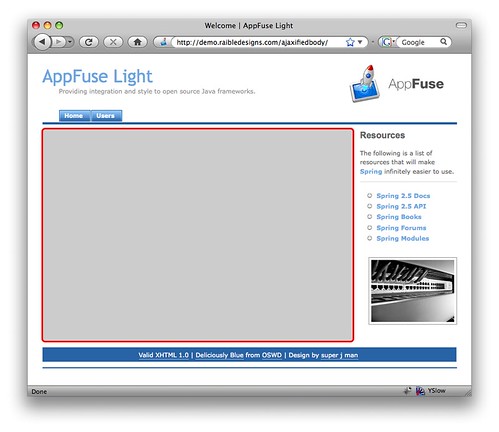Adding Expires Headers with OSCache's CacheFilter
A couple of weeks ago, I wrote about how I improved this site's YSlow grade by concatenating JavaScript and CSS with wro4j. Even though I loved the improvements, there was still work to do:
I'm now sitting at a YSlow (V2) score of 75; 90 if I use the "Small Site or Blog" ruleset. I believe I can improve this by adding expires headers to my images, js and css.
Last Monday, wro4j 1.1.0 was released and I thought it would solve my last remaining issue. Unfortunately, it only adds expires headers (and ETags) to images referenced in included CSS. Of course, this makes sense, but I thought they'd add a filter to explicitly add expires headers.
Since I still wanted this feature, I did some searching around and found what I was looking for: OSCache's CacheFilter. It was surprisingly easy to setup, I downloaded OSCache 2.4.1, added it to my WEB-INF/lib directory, and added the following to my web.xml.
<filter>
<filter-name>CacheFilter</filter-name>
<filter-class>com.opensymphony.oscache.web.filter.CacheFilter</filter-class>
<init-param>
<param-name>expires</param-name>
<param-value>time</param-value>
</init-param>
<init-param>
<param-name>time</param-name>
<param-value>2592000</param-value> <!-- one month -->
</init-param>
<init-param>
<param-name>scope</param-name>
<param-value>session</param-value>
</init-param>
</filter>
<filter-mapping>
<filter-name>CacheFilter</filter-name>
<url-pattern>*.gif</url-pattern>
</filter-mapping>
<filter-mapping>
<filter-name>CacheFilter</filter-name>
<url-pattern>*.jpg</url-pattern>
</filter-mapping>
<filter-mapping>
<filter-name>CacheFilter</filter-name>
<url-pattern>*.png</url-pattern>
</filter-mapping>
After restarting Tomcat and clearing out my Firefox cache, I was in business.
I did experience one issue along the way when I tried to remove the oscache.jar from my WEB-INF/lib directory. I'm using the JSPWiki Plugin and it seems to rely on a class in oscache.jar. I'm not sure which version oscache.jar is, but the packages got moved around somewhere along the way. The good news is it seems OK to have both oscache.jar and oscache-2.4.1.jar in Roller's classpath.
After discovering the duplicate JARs issue, I got to thinkin' that EhCache would probably have a solution. Sure enough, it has a SimpleCachingHeadersPageCachingFilter. Since I already had a working solution, I didn't bother trying EhCache (especially since my Roller install uses EhCache 1.1 and the filter is only available in a later version). However, when I implement expires headers in AppFuse, I'll definitely try EhCache's solution.
As for my YSlow score, it didn't improve as much as I'd hoped (low 80s instead of mid 80s). Some of this is due to my embedded presentation from Slideshare. There's also some external images I'm using in my Lightbox JS implementation. So if I can find a better Lightbox implementation (supports rel="lightbox" syntax), there's a good chance I'll switch. In the meantime, I'm lovin' how much faster this site loads.
In case you're wondering, I do plan on adding css/js concatenation and expires headers to both AppFuse 2.1 and Roller 5.
Update: FWIW, I did try to configure expires headers in Apache, but the AJP 1.3 Connector doesn't seem to allow this to work. To quote Keith from KGB Internet:
I added an expires directive and it didn't touch the header for anything served from Tomcat, but does for content served directly by Apache. This might have to be set up in Tomcat.







